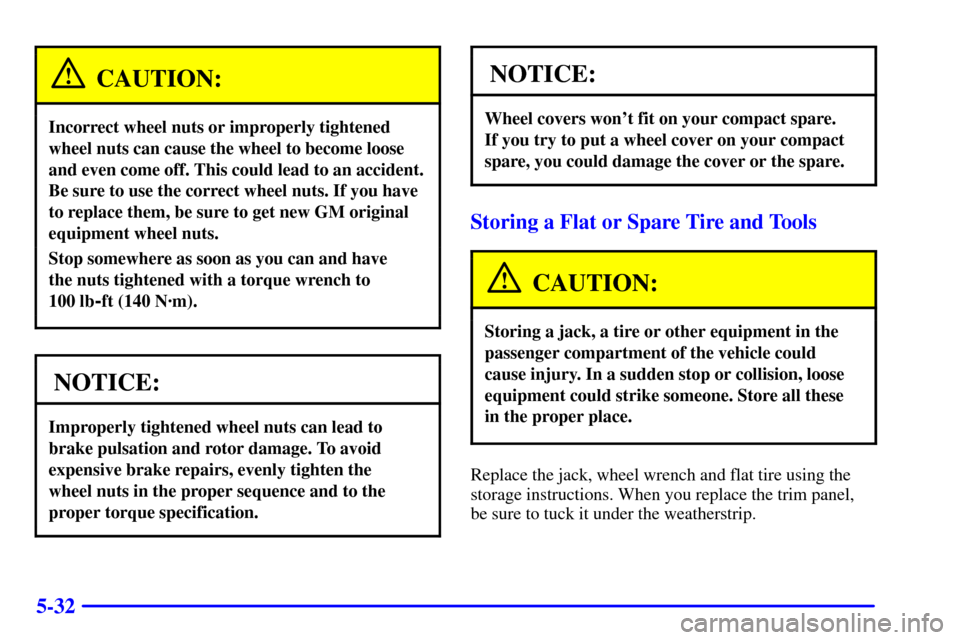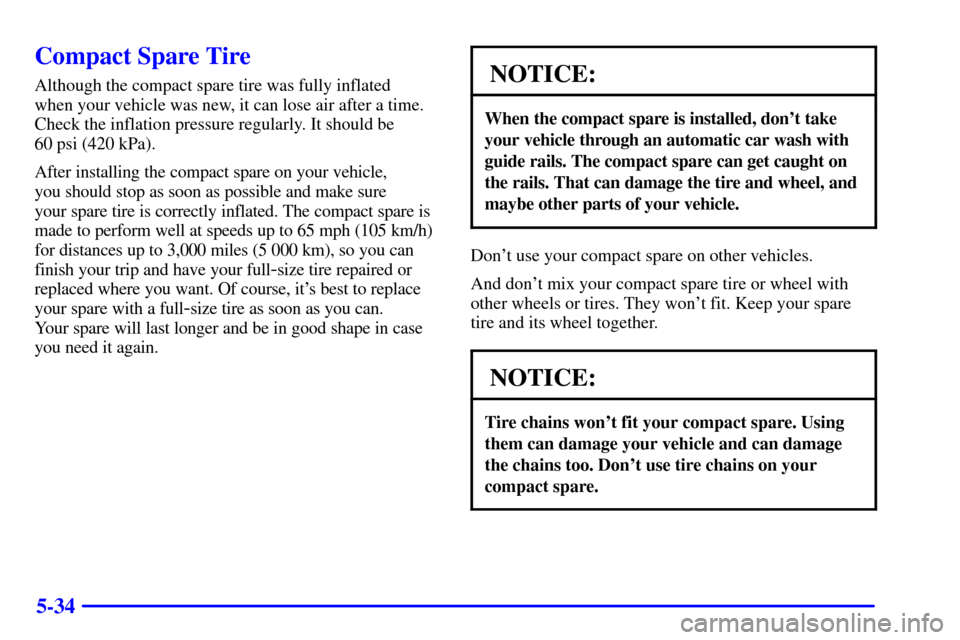Page 72 of 357

2-15 Shock Sensor
Coupe Convertible
The shock sensor is what triggers the alarm when it
detects a blow to your vehicle. It is located over the
wheelhouse near the spare tire in the hatch area, on the
passenger's side of the vehicle. There are two levels of
alarms via the shock sensor. Two horn blasts and
parking lamp flashes for non
-threatening blows to the
vehicle and a full two
-minute alarm for harder blows to
the vehicle. Its sensitivity can be adjusted if more or
less sensitivity is desired. If sensitivity is increased too
much, it may give false alarms caused by gusts of wind
or other natural events that may shake the vehicle.When your vehicle is new, there will be a label covering
the adjustment knob. Remove the label and adjust the
sensor as desired. Turn the knob clockwise to increase
sensitivity and counterclockwise to decrease sensitivity.
The shock sensor is ignored by the alarm system when
the following happens:
�The ignition is on,
�the hatch is open,
�the alarm is disarmed,
�when customized to be ignored, and
�for five seconds after the horn sounds an alarm
or chirp.
The shock sensor is ignored after triggering three full
alarms until the system is rearmed.
Page 240 of 357
5-24
Find the plastic screw heads in the trim panel over the
spare tire. See ªCompact Spare Tireº later in this section
for more information about the compact spare. Use a
coin or a key to turn the screw heads until the slots point
front and back to the unlock position. Gently lift the trim
panel front forward edge and remove the panel.If you have speakers in the trim panel, you may have to
disconnect the wire from the speaker. The speaker wire
may be long enough to remove the trim panel without
disconnecting the wire.
To remove the jack and wheel wrench, loosen and
remove the plastic cover.
Page 241 of 357
5-25
Remove the wing nut and adapter and pull out the spare.The tools you'll be using include the jack (A) and wheel
wrench (B).
Page 243 of 357
5-27 Removing the Flat Tire and Installing the
Spare Tire
1. Using the wheel wrench, loosen all the wheel nuts.
Don't remove them yet.
Page 245 of 357
5-29
CAUTION:
Getting under a vehicle when it is jacked up is
dangerous. If the vehicle slips off the jack, you
could be badly injured or killed. Never get under
a vehicle when it is supported only by a jack.
CAUTION:
Raising your vehicle with the jack improperly
positioned can damage the vehicle and even make
the vehicle fall. To help avoid personal injury
and vehicle damage, be sure to fit the jack lift
head into the proper location before raising
the vehicle.3. Raise the vehicle by turning the wheel wrench
clockwise. Raise the vehicle far enough off the
ground so there is enough room for the spare tire
to fit.
4. Remove all the wheel nuts and take off the flat tire.
Page 246 of 357
5-30
5. Remove any rust or dirt
from the wheel bolts,
mounting surfaces and
spare wheel.
CAUTION:
Rust or dirt on the wheel, or on the parts to
which it is fastened, can make the wheel nuts
become loose after a time. The wheel could come
off and cause an accident. When you change a
wheel, remove any rust or dirt from the places
where the wheel attaches to the vehicle. In an
emergency, you can use a cloth or a paper towel
to do this; but be sure to use a scraper or wire
brush later, if you need to, to get all the rust or
dirt off.
CAUTION:
Never use oil or grease on studs or nuts. If you
do, the nuts might come loose. Your wheel could
fall off, causing a serious accident.
6. Install the spare tire and replace the wheel nuts with
the rounded end of the nuts toward the wheel.
Tighten each nut by hand until the wheel is held
against the hub.
Page 248 of 357

5-32
CAUTION:
Incorrect wheel nuts or improperly tightened
wheel nuts can cause the wheel to become loose
and even come off. This could lead to an accident.
Be sure to use the correct wheel nuts. If you have
to replace them, be sure to get new GM original
equipment wheel nuts.
Stop somewhere as soon as you can and have
the nuts tightened with a torque wrench to
100 lb
-ft (140 N´m).
NOTICE:
Improperly tightened wheel nuts can lead to
brake pulsation and rotor damage. To avoid
expensive brake repairs, evenly tighten the
wheel nuts in the proper sequence and to the
proper torque specification.
NOTICE:
Wheel covers won't fit on your compact spare.
If you try to put a wheel cover on your compact
spare, you could damage the cover or the spare.
Storing a Flat or Spare Tire and Tools
CAUTION:
Storing a jack, a tire or other equipment in the
passenger compartment of the vehicle could
cause injury. In a sudden stop or collision, loose
equipment could strike someone. Store all these
in the proper place.
Replace the jack, wheel wrench and flat tire using the
storage instructions. When you replace the trim panel,
be sure to tuck it under the weatherstrip.
Page 250 of 357

5-34
Compact Spare Tire
Although the compact spare tire was fully inflated
when your vehicle was new, it can lose air after a time.
Check the inflation pressure regularly. It should be
60 psi (420 kPa).
After installing the compact spare on your vehicle,
you should stop as soon as possible and make sure
your spare tire is correctly inflated. The compact spare is
made to perform well at speeds up to 65 mph (105 km/h)
for distances up to 3,000 miles (5 000 km), so you can
finish your trip and have your full
-size tire repaired or
replaced where you want. Of course, it's best to replace
your spare with a full
-size tire as soon as you can.
Your spare will last longer and be in good shape in case
you need it again.
NOTICE:
When the compact spare is installed, don't take
your vehicle through an automatic car wash with
guide rails. The compact spare can get caught on
the rails. That can damage the tire and wheel, and
maybe other parts of your vehicle.
Don't use your compact spare on other vehicles.
And don't mix your compact spare tire or wheel with
other wheels or tires. They won't fit. Keep your spare
tire and its wheel together.
NOTICE:
Tire chains won't fit your compact spare. Using
them can damage your vehicle and can damage
the chains too. Don't use tire chains on your
compact spare.